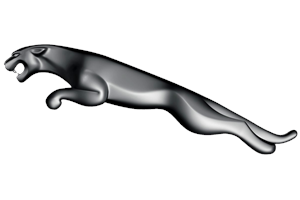


This edition of the Jaguar XJ R-S 6.0 V12 is the 3 speed / Auto version and was first brought out in 1992. This was at around the same time as the introduction of the 1993 Jaguar XJ 220 S 3.5 V6 Turbo and the 1992 Bugatti EB110 SuperSport.This particular Jaguar XJ has a 5993cc Naturally Aspirated Petrol powerplant with 12 cylinders in a V formation.
The XJ shares its Petrol V12 engine configuration with the likes of the 2021 Aston-Martin Valkyrie Coupe 6.5 V12 and the 2021 Aston-Martin Valkyrie Spider 6.5 V12. If you're looking for other fast cars which share the XJ's Rear Wheel Drive, Coupe combination then how about the 1982 Fiat X1/9 1.5 8V or the 1965 Aston-Martin DB6 1965.
Weighing in at 1824 kgs (4021 lbs) this makes the Jaguar XJ R-S 6.0 V12 in the same weight category as the 2023 Aston-Martin DBS 770 Ultimate 5.2 V12 Twin Turbo or the give or take 50kg.
In terms of power the 5993cc 24V V12 engine produces 333 bhp (248 kW) @ 5250 rpm similar to the 2024 Mazda CX-90 S 3.3 Turbo (340 bhp) or the 2023 Porsche Cayenne Coupe 3.0 V6 Turbo (348 bhp).
The Naturally Aspirated V12 throws out 365 lb-ft (494.8 Nm) @ 3650 rpm placing it with cars of similar torque performance figures such as the 2024 Mazda CX-90 S 3.3 Turbo (369 lb-ft) or the 2023 Porsche Cayenne Coupe 3.0 V6 Turbo (369 lb-ft).
If one combines the weight with power or torque performance for the Jaguar XJ you can get a better idea of it's real world performance.
![BMW 1 Series M140i xDrive F20 - [2016] image BMW 1 Series M140i xDrive F20 - [2016] image](/editionimages/1765.jpg)
The 2016 BMW 1 Series M140i xDrive F20 (207.4 bhp per ton) has similar Bhp Per Ton stats as the Jaguar XJ.
The Jaguar XJ has a Power to weight ratio of 182.5 bhp per ton and 200.1 lb-ft per ton. Bhp Per Ton figures of the 1992 XJ competing with the 2016 BMW 1 Series M140i xDrive F20 (207.4 bhp per ton) or the 1951 Jaguar C Type 3.4L (207.2 bhp per ton).
If you agree with the late great Carroll Shelby then arguably an even better indicator of potential performance, Torque. Use weight as well and you end up with - Torque per ton, with the Jaguar XJ generating around 200.1 lb-ft per ton. If you're curious as to what other cars have as much torque to weight then look no further than the 2022 BMW Z4 M40i 3.0 Turbo (225.0 lb-ft per ton) or the 2015 Mercedes A Class 45 AMG 4Matic 2.0 Turbo (225.0 lb-ft per ton).
With a 0-60mph time of 6.50 secs or a 0-100km/h (0-62mph) of 6.7 secs, this made the Jaguar XJ R-S 6.0 V12 as fast as the 2020 Abarth 695 70th Anniversario 1.4 Turbo (6.50 secs) the 2018 Abarth 595 Competizione 1.4 Turbo (6.50 secs) the 2016 Subaru Legacy 3.6 R (6.50 secs) the or the 2016 Abarth 124 Spider 1.4 Turbo (6.50 secs). This Jaguar XJ R-S 6.0 V12 is also faster than the 2018 Toyota Sequoia TRD Sport 5.7 V8 (6.60 secs) the 2016 Audi A3 2.0 TDI S-tronic Quattro Sportback (6.60 secs) the 2014 Audi A1 1.8 TFSI S-TRONIC (6.60 secs) the and the 2013 Skoda Octavia RS TSI 2.0 Turbo (6.60 secs).
When talking about the performance of the Jaguar XJ on the drag strip it can reach a quarter mile in an estimated 14.54 secs @ 94.1 mph. Similar performance down the quarter mile can be found with the the 2006 BMW 3 Series 335i M-Sport 2d E90 (14.47 secs), the 1993 BMW 3 Series M3 E36 (14.47 secs), and the 2006 Mini Cooper S Works GP (14.48 secs).
Modern performance cars are often artificially restricted to 155mph. The 1992 version of the Jaguar XJ R-S 6.0 V12 has a maximum speed of 158mph.
If maxing out your car on the AutoBahn is your thing and you're wondering what's faster than the 1992 Jaguar XJ R-S 6.0 V12 then how about the 2017 Honda Civic Type R 2.0i 16v Turbo - FK8 (169 mph), the 1995 Maserati Ghibli 2.0 Turbo Cup (169 mph), or the 2023 Porsche Cayenne S 4.0 V8 Turbo (170 mph).









Mercedes E Class 60 AMG 6.0 V8 W124
Engine: Naturally Aspirated Petrol | 5956cc 32v V8
Top Speed: 249.4 kph
0-100kph: 5.5 seconds



















